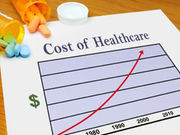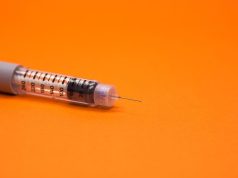In nonfederal hospitals, growth in spending mainly due to increased prices for existing drugs
MONDAY, July 25, 2016 (HealthDay News) — Total drug expenditures are expected to increase by 11 to 13 percent in 2016, according to a study published online in the American Journal of Health-System Pharmacy.
Glen T. Schumock, Pharm.D., M.B.A., Ph.D., from the University of Illinois at Chicago, and colleagues obtained drug expenditure data through calendar-year 2015. Based on a combination of quantitative analyses and expert opinion, the authors projected expenditures for 2016.
In calendar-year 2015, total U.S. prescription sales were $419.4 billion; an increase of 11.7 percent from 2014. In clinics and nonfederal hospitals, the researchers found that prescription expenditures totaled $56.7 billion and $33.6 billion, respectively, representing increases of 15.9 and 10.7 percent, respectively. In nonfederal hospitals, increased prices for existing drugs was the main driver of the growth in spending. In terms of 2015 expenditures, the hepatitis C combination drug ledipasvir-sofosbuvir was the main drug overall ($14.3 billion); infliximab was the top drug in both clinics and nonfederal hospitals. In 2015, specialty agents and older generics were the drugs with the greatest increases in expenditures. These agents are expected to influence spending in 2016.
“We project an 11 to 13 percent increase in total drug expenditures overall in 2016, with a 15 to 17 percent increase in clinic spending and a 10 to 12 percent increase in hospital spending,” the authors write. “Health-system pharmacy leaders should carefully examine local drug utilization patterns in projecting their own organization’s drug spending in 2016.”
Several authors disclosed financial ties to the pharmaceutical industry.
Copyright © 2016 HealthDay. All rights reserved.








